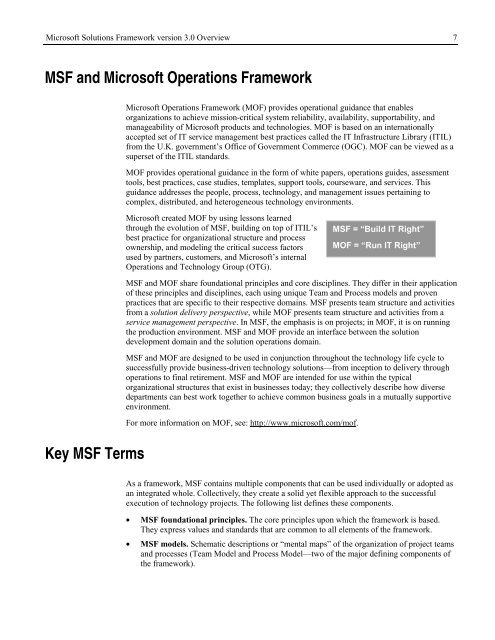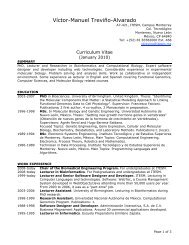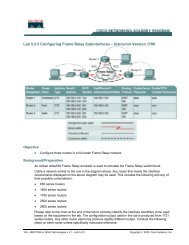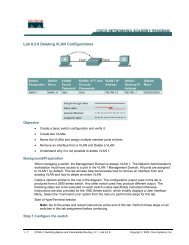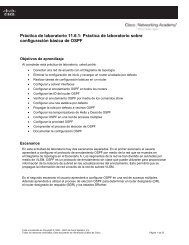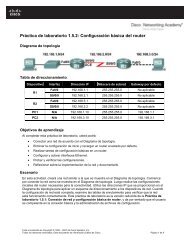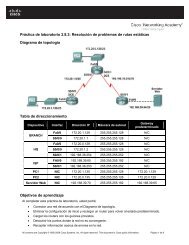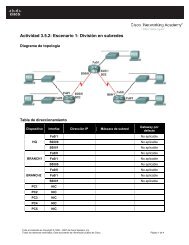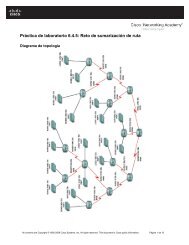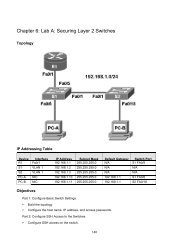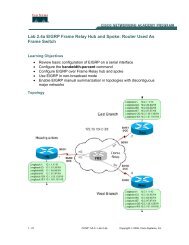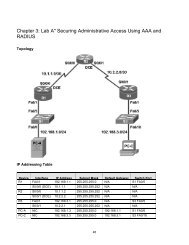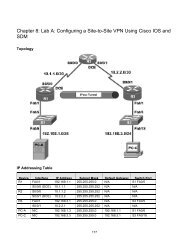White Paper Microsoft Solutions Framework version 3.0 Overview
White Paper Microsoft Solutions Framework version 3.0 Overview
White Paper Microsoft Solutions Framework version 3.0 Overview
Create successful ePaper yourself
Turn your PDF publications into a flip-book with our unique Google optimized e-Paper software.
<strong>Microsoft</strong> <strong>Solutions</strong> <strong>Framework</strong> <strong>version</strong> <strong>3.0</strong> <strong>Overview</strong> 7<br />
MSF and <strong>Microsoft</strong> Operations <strong>Framework</strong><br />
<strong>Microsoft</strong> Operations <strong>Framework</strong> (MOF) provides operational guidance that enables<br />
organizations to achieve mission-critical system reliability, availability, supportability, and<br />
manageability of <strong>Microsoft</strong> products and technologies. MOF is based on an internationally<br />
accepted set of IT service management best practices called the IT Infrastructure Library (ITIL)<br />
from the U.K. government’s Office of Government Commerce (OGC). MOF can be viewed as a<br />
superset of the ITIL standards.<br />
MOF provides operational guidance in the form of white papers, operations guides, assessment<br />
tools, best practices, case studies, templates, support tools, courseware, and services. This<br />
guidance addresses the people, process, technology, and management issues pertaining to<br />
complex, distributed, and heterogeneous technology environments.<br />
<strong>Microsoft</strong> created MOF by using lessons learned<br />
through the evolution of MSF, building on top of ITIL’s<br />
best practice for organizational structure and process<br />
ownership, and modeling the critical success factors<br />
used by partners, customers, and <strong>Microsoft</strong>’s internal<br />
Operations and Technology Group (OTG).<br />
MSF = “Build IT Right”<br />
MOF = “Run IT Right”<br />
Key MSF Terms<br />
MSF and MOF share foundational principles and core disciplines. They differ in their application<br />
of these principles and disciplines, each using unique Team and Process models and proven<br />
practices that are specific to their respective domains. MSF presents team structure and activities<br />
from a solution delivery perspective, while MOF presents team structure and activities from a<br />
service management perspective. In MSF, the emphasis is on projects; in MOF, it is on running<br />
the production environment. MSF and MOF provide an interface between the solution<br />
development domain and the solution operations domain.<br />
MSF and MOF are designed to be used in conjunction throughout the technology life cycle to<br />
successfully provide business-driven technology solutions—from inception to delivery through<br />
operations to final retirement. MSF and MOF are intended for use within the typical<br />
organizational structures that exist in businesses today; they collectively describe how diverse<br />
departments can best work together to achieve common business goals in a mutually supportive<br />
environment.<br />
For more information on MOF, see: http://www.microsoft.com/mof.<br />
As a framework, MSF contains multiple components that can be used individually or adopted as<br />
an integrated whole. Collectively, they create a solid yet flexible approach to the successful<br />
execution of technology projects. The following list defines these components.<br />
• MSF foundational principles. The core principles upon which the framework is based.<br />
They express values and standards that are common to all elements of the framework.<br />
• MSF models. Schematic descriptions or “mental maps” of the organization of project teams<br />
and processes (Team Model and Process Model—two of the major defining components of<br />
the framework).


